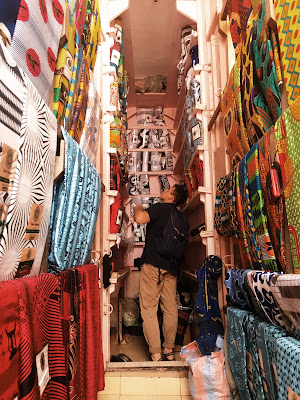The my favorite part of working with the clinics has been surgeries. It has been absolutely amazing to watch these surgeons work in less that favorable conditions and pull off amazing results.
 |
| Dr. Wanye, Natalie, Mr. L and I after a day of long surgery |
Cataract surgery is one of the most amazing things that I
have watched. The patient lays on a surgical table. The optic nerve is numbed
with anesthesia. The eye is made of layers and layers of tissue. To start the
operation, the ophthalmic nurse sterile the area around the eye and places a
cover over the face with plastic over the eye which is cut to allow access to
the eye. This protective cover is used during surgeries done by Dr. Wanye but a
fabric cover is used by Dr. Gyasi at St. Thomas which has no plastic. The
surgeon then opens the eye with an instrument that keeps the eye open for the
surgery. With a cauterizer and a modified scissors an incision is made in the
conjunctiva, as the bleeding starts the small vessels are cauterized. Next an incision is made in the sclera in sort
of a crescent shape. Dr. Wanye said that the goal is to only go in about 1/3 of
the sclera. Then a crescent blade is used to open the eye capsule to get to the
membranous capsule that holds the lens that has become a cataract. The cataract
is remove carefully while using different protective solutions to keep the
cornea from scratching. If the cornea scratches the person will be permanently
blind.
 |
| The tools of the trade |
The intra-ocular lens or IOL is placed back inside the
capsule and membrane that held the lens. The power of the lens is determined the
depth of the persons eye. The deeper the higher the power. To finish the surgery
the surgeon places a pocket of antibiotics above the wound, which is self-sealing.
The ophthalmic nurse place a pad of gauze and a protective shield which is tapped over the eye and left on until
the morning. This whole process takes about 10 mins. It’s amazing and after
this people will be able to see almost back to perfect and with glasses any other
refractive error can be fixed.
 |
| A patient after a bilateral cataract surgery. |
 |
| Patients in post-op waiting for their eye shields to be removed |
The best thing is to watch people get their eye shields off.
When they start smiling and seeing it is wonderfully fulfilling. It is why we
do this work. Its amazing! I love it!






Comments
Post a Comment